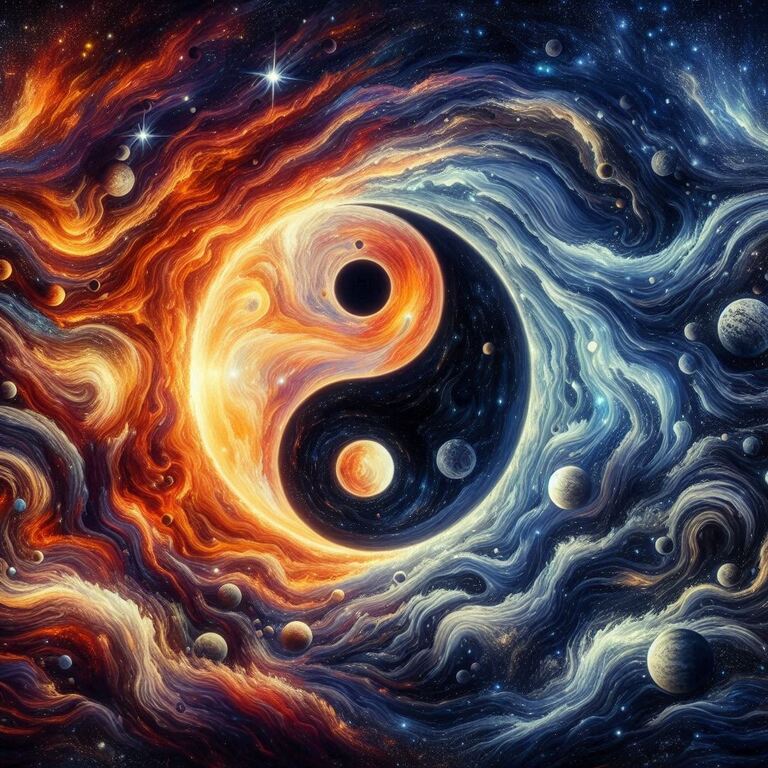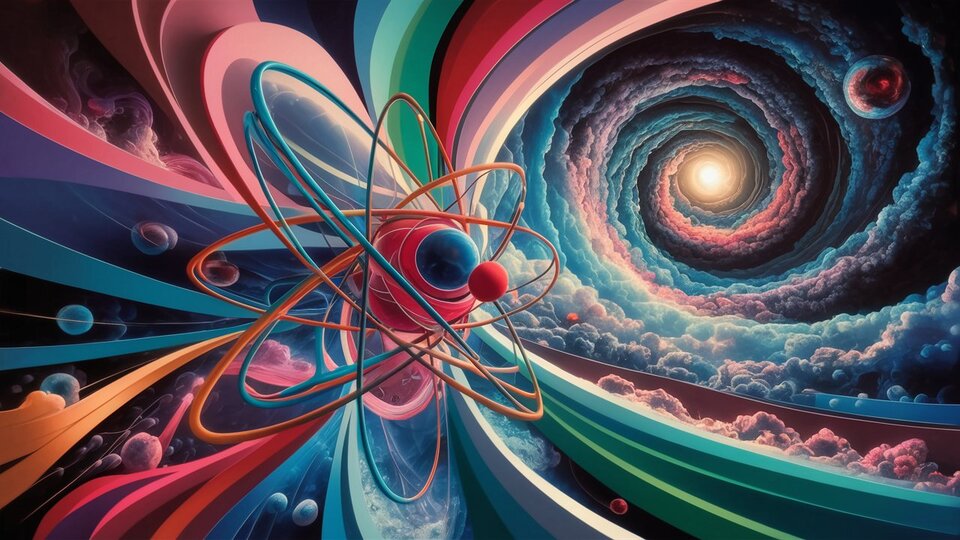Have you ever wondered where we come from? What are the things that surround us? What is the reason for our existence? These questions are not new. Thousands of years ago, the first Greek philosophers pondered the origin of the world. Deeply connected to nature, they constantly observed its changes. But how could they explain them? How did matter arrange and mold itself to become something different, giving birth to life?
“The greatest wisdom lies in recognizing our own ignorance.”
Empedocles
The Four Fundamental Elements of Life
In a distant era, certain ancient Greeks imagined that nature consisted of four elemental substances: earth, water, air, and fire. Empedocles was one of the philosophers known for establishing these four fundamental elements of life. He called them “roots.”

For him, everything around us—flowers, pets, furniture, clothing—comes from these four fundamental elements, with only the combination and arrangement varying.
Let’s take a simple example from cooking. With the same ingredients, flour, eggs, sugar, and milk, one can create an infinite variety of cakes with different shapes, textures, and tastes. Or consider the painter. With only one color available, red, it is impossible to paint a green tree. But if he also has green, yellow, and black in his palette, he can create hundreds of colors by simply varying their proportions.
Empedocles held that everything in nature is in constant change and transformation; nothing is eternal. For example, over time, organisms age, plants wither, snow melts, and rivers continue their course without ever flowing backward.
Though everything is in constant and perpetual motion, the elemental “roots” remain unchanged, unaffected by these metamorphoses. For Empedocles, at the core, nothing truly changes; only the four elements unite and separate, blending once again in the future.
The Discovery of the Building Blocks of the Universe: Atoms
After Empedocles came a great philosopher named Democritus. He thought that everything in nature was composed of tiny building blocks, each individually eternal and immutable. He was the first to use the term “atom”, which means indivisible or unbreakable in Greek.

For Democritus, atoms were eternal elements that could not be broken or divided into smaller parts, otherwise nature would lose its structure and become like soup.
Democritus believed that there were an infinite number of atoms in nature. This is precisely why they can combine in infinite variations.
Since atoms are eternal, when a body dies or decomposes, the atoms that form it disperse and can form new bodies. A hydrogen atom in my skin might have come from an animal whose species is already extinct. Or perhaps a nitrogen atom in my DNA originated from a star explosion long ago. Based on this principle, we all carry the history of the universe within us. Or perhaps we are the universe itself.
Two thousand years have passed since then, and we can affirm that Democritus’s atomic theory is quite accurate. These tiny particles are literally everywhere, in quantities so staggering we cannot fathom them. Wherever we turn our heads, our eyes encounter hundreds of billions of them, without even realizing it.
Rather than the four root elements Empedocles spoke of, science has now discovered 118 types of atoms, whose arrangements allow the creation of everything—leaves, trees, living beings, planets, stars, and almost all the matter in the universe.
Science has established that atoms can be subdivided into even smaller elementary particles like protons, neutrons, and electrons.
But when we think about it, a problem arises. If these tiny particles are the origin of everything, where do they come from? Who gave them birth? Where do they find the force and will to organize themselves into the forms and bodies we know?
“Nothing exists except atoms and space, everything else is opinion.”
Democritus
The Forces That Unite and Separate Things
In demonstrating that everything in nature is due to the mixing or separation of the four roots, Empedocles also wondered: Why do these elements come together to create life? What causes their separation, such as in the case of death?

For Empedocles, two different forces are at work in nature: love and hate. What unites things is love, and what separates them is hate.
“These [roots] never cease changing place continually, now being all united by Love into one, now each borne apart by the hatred engendered of Strife, until they are brought together in the unity of the all, and become subject to it.”
Empedocles
In the same context, Anaxagoras, another ancient Greek philosopher interested in the origin of nature, thought that the force structuring and shaping animals, humans, and life could only be intelligence.
For Anaxagoras, nature consists of tiny, unseen particles. Everything is divisible into smaller parts, yet each tiny piece contains a portion of the whole.
A modern example to better understand Anaxagoras’s thought is the cells that make up our bodies. If we take a cell from our hand, we can extract genetic information from its DNA, revealing not only the state and color of our skin but also our eye color, hair type, race, etc. Each cell in our body holds detailed information about the characteristics of our body. The whole is thus represented in each part, no matter how small.

In a universe as vast and immense as ours, even the smallest fraction, like a fingertip, can plunge us into a world as vast and mysterious as the immensity of the skies.
One fascinating theory suggests that atoms emerged following the Big Bang, around 13.9 billion years ago. Surprisingly, they have exactly the properties and characteristics needed to combine and build the complex world we live in, as if an external force is orchestrating this harmony.
Perhaps the rules of nature were established even before the creation itself began.
Delving into the world of atoms, we have discovered that they apparently consist of a perfect void, 99.9999999999999% empty space.
With this in mind, and following Anaxagoras’ reflections, questions arise: Do we really touch anything in this world? Are we really living beings, or just an idea, an illusion, a void?
Democritus, on the other hand, was very rational and materialistic. He did not call upon any force or spirit to explain natural phenomena. He believed that everything in nature was calculated and subject to supreme, inviolable laws. Behind all these phenomena lies a natural cause, a cause within the things themselves.
As beings with limited understanding but gifted with consciousness, perhaps our role is to marvel at the miracle of life, to learn from it, and to be inspired by its inherent intelligence. In doing so, we may ultimately be guided to true wisdom.


Leave a Reply